The vibrant, juicy garden vegetables may attract deer since they swiftly provide much-needed nutrients, necessitating cultivating deer-resistant perennials.

Many other perennials will do the job, but let us be frank and no plants will permanently deter predators like deer.
However, you can significantly reduce the risk of crop damage by fortifying your garden with deer-resistant perennials.
Read on to discover the variety of perennials perfect for deterring deer from your garden.
Table of Contents Show
What Perennial Flowers Do Deers Avoid Eating?
Oh, dear! Deer are not very picky eaters and may relish any delicious-tasting flowers, succulents, and vegetables in the backyard.
These predators are particularly fond of common garden-grown flowers like Impatiens, Sunflowers, Lilyturf, and Snowdrops.
They will feed on many perennial and annual flowers that they may find attractive, including juicy succulents.
However, they shy away from perennials that display unattractive characteristics such as bitter flavor, prickly or fuzzy foliage, and pungent odor.
They find the fuzzy leaves of many perennials unappetizing and will walk without harming them.
Moreover, they avoid scented blossoms that draw pollinators like bees and ladybugs.
For example, aromatic Salvia produces lush blue blossoms that grow every summer and deter deer. Similarly, Lavender is another fragrant plant that blossoms yearly and keeps predators away.
22+ Best Deer Resistant Perennials
Remember, deer are attracted to anything that looks green, fleshy, and nutritious.
Therefore, the key is to border your garden with deer-resistant perennials; they can walk away before damaging the essential crops.
Here is a list of popular deer-resistant perennials recommended based on their natural habitat, growth habits, and flowering behavior.
1. Lavender
Lavender (Lavandula sp.) makes a beautiful flowering herb with beautiful purple and dusky blue flowers that will effectively repel pests and predators.
The scented blossoms effectively repel garden bugs such as mosquitos, fleas, and moths, and large animals like deer.

These perennials grow best in USDA Zones 5 to 9 and bloom early to late summer. They are known to be full sun deer-resistant perennials.
The mature plant will grow 1 to 3 feet tall and thrive in full sun with well-draining soil.
Moreover, growing Lavender as a border plant will help deter deer from entering the garden.
2. Sages
Sage is a popular herb plant that thrives in full sun and repels garden predators like deer.
While deer normally avoid eating aromatic herbs like sage, if they do, they will probably prefer the flowers to the foliage.
These herbs can thrive in both cool and arid climates of USDA range 5 to 11 and are known to be drought tolerant.
However, ensure to provide sandy, loamy soil with a pH between 6.0 to 7.0 and never over-fertilizes.

They even blossom throughout spring, summer, and fall, giving an aromatic smell around the garden and keeping bugs away.
Most Sage varieties grow 1 to 2 feet tall and display spikes of colorful blossoms, including blue, purple, pink, and red flowers.
Note: Like all herbs, you can harvest Sage flowers for different culinary purposes.
3. Peonies
Peony (Paeonia lactiflora) is a perennial flowering plant native to Asia, Europe, and North America.
It displays enormous flowers, usually larger than Roses, in lighter shades of pink, white, or coral.
Deers usually avoid eating Peonies due to their strong, pungent smell.
They are summer-loving perennials that will thrive in full sun with good air circulation and slightly moist, well-drained soil.

Furthermore, the mature plant will reach about 3 to 4 feet in height and provide shade to ground plants. Most gardeners prefer to call them perennial shade plants.
Ensure to grow them in hardy zones 2 to 9 that boast cool to warm temperatures.
4. Bearded Irises
Iris is a flamboyant flowering species with 310 species around the world that boast showy flowers.
Deer tend to avoid Bearded Iris due to their sharp scents. They are also toxic to humans and pets.
Bearded Iris is one of the most mature perennials that displays many different sub-species grown in different hardy zones.
For instance, the Bearded Iris is primarily grown in Zones 3 to 10, the Siberian Iris is grown in Zones 3 to 9, and Iris reticulata is grown mainly in Zones 5 to 9.
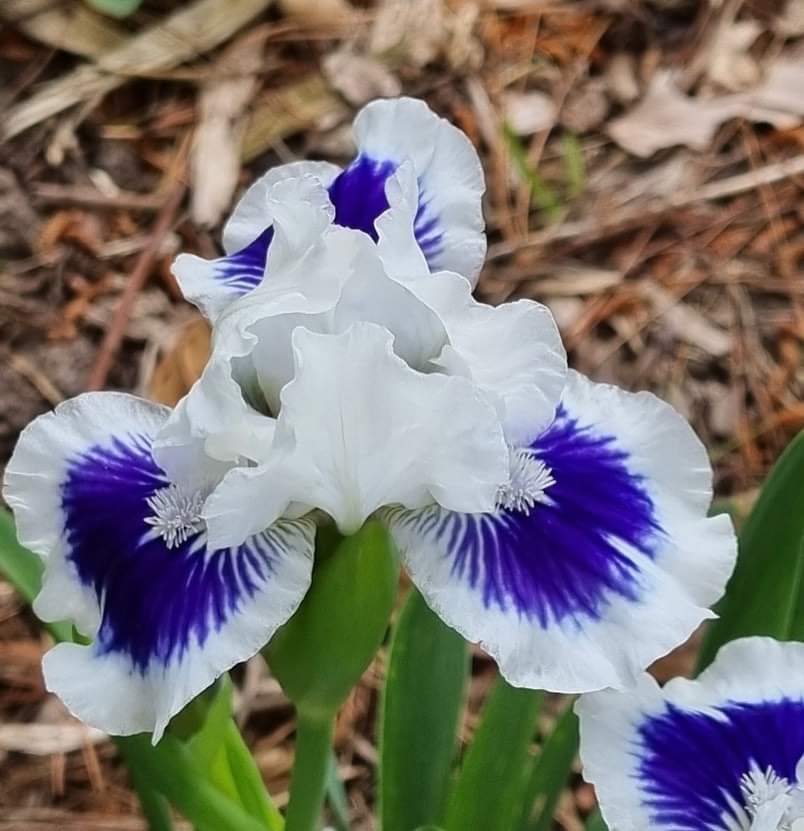
However, all these Irises love full sun, requiring over 6 hours of sunlight daily.
They blossom every spring in red, orange, and yellow colors. Some species may display brown, purple, blue, and black blossoms.
So, provide sandy, loamy soil with pH 6.5 to 6.8 to witness a healthy-looking plant with vibrant blooms.
5. Bee Balm
Bee Balm (Monarda didyma) is a flowering perennial endemic to North America that effectively repels deer using its minty scent.
As the name suggests, the Balm flowers attract pollinators like bees and butterflies.
The flowering species boasts masses of vibrant blossoms throughout the summer in red, crimson, white, and pink colors.
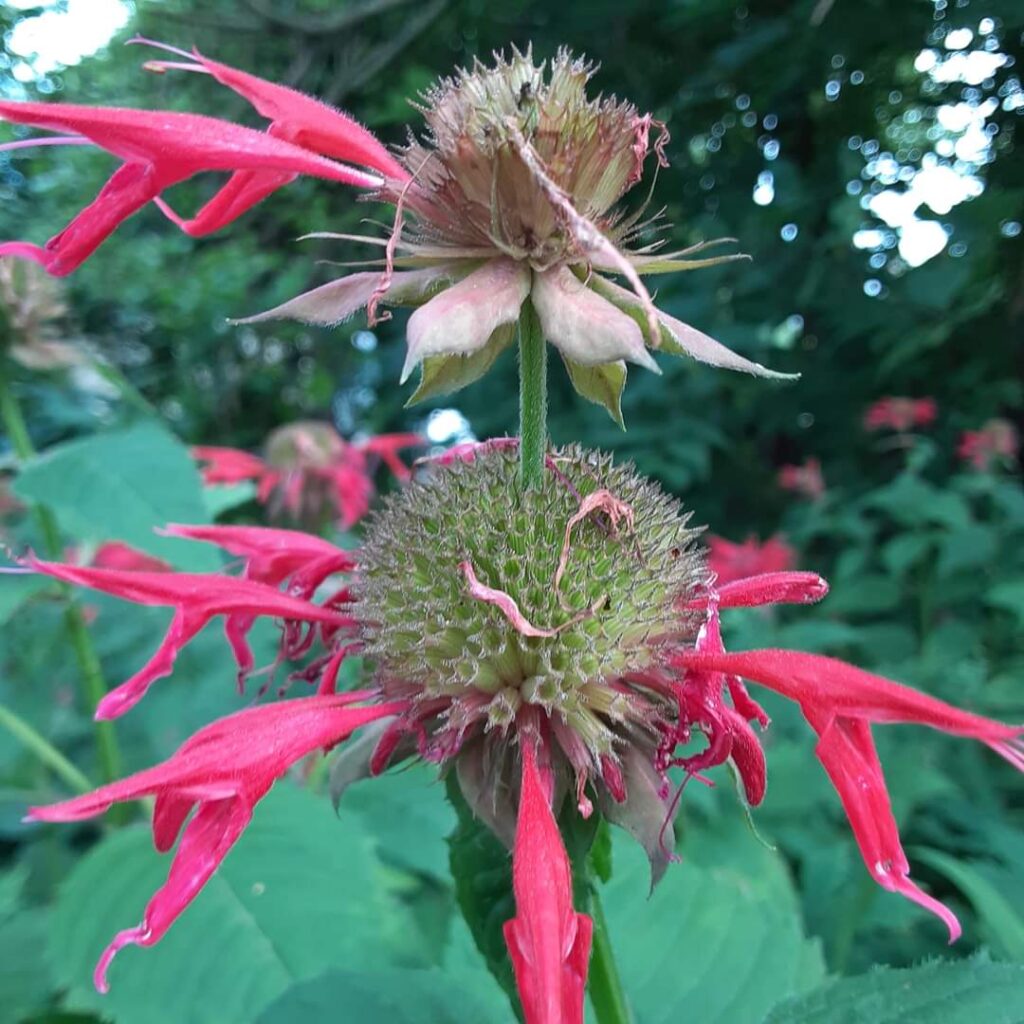
Provide full sun with partial shade in zones 4-8 to witness a healthy-looking Bee Balm plant.
With great care and evenly moist soil rich in organic matter, it will quickly attain a height of 3 to 6 feet.
6. Allium
Allium (Ornamental Onion) is a bulb-flowering plant from the same family as onion, scallion, and shallot.
The strong scent of Ornamental Onion keeps deer and other predators at bay and the sheer height of 4-feet will provide shade to ground plants.
The gorgeous plant displays giant floating globes of blossoms ranging in colors white, rose, and purple.

Grow them in hardy zones 4 to 10 and expect them to blossom every summer when they attract many pollinators in the garden.
Unlike its close relatives, this perennial plant produces multiple denser flowers per plant and denser each year.
7. Kniphofia (Red Hot Poker)
Red Hot Poker is a vibrant flowering plant that displays spikes or red, orange, and yellow bottle-brush-like blossoms every summer.
The easy-to-grow perennial may reach 2 to 3 feet tall when provided with full sun and well-drained soil.
Their unattractive grassy foliage and strong scent of flowers keep the deer away.
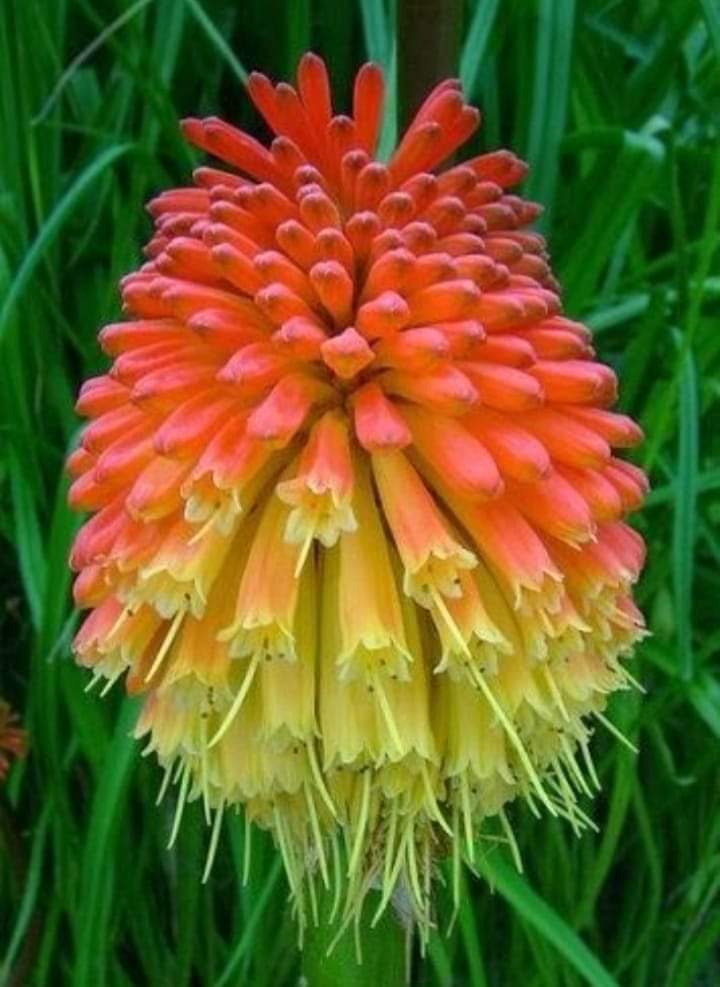
Moreover, it is also known for its lanced-shaped foliage, which may give an impression of flowers growing out of the lances.
Red Hot Poker is hardy in zones 5 to 9, mixing cool and warm temperatures.
You can quickly propagate Red Hot Poker in spring by dividing the root balls into two.
8. Achillea (Yarrow)
Yarrow (Achillea) is a herbaceous flowering plant that releases digestion-improving chemicals and a delicious scent when ingested.
Therefore, predators like deer are more likely to avoid them.
The herb will grow to a height of 2 to 3 feet and display large flat flower clusters, often in white, yellow, and pink colors.

Expect them to blossom every summer with top feathery, fragrant foliage. However, ensure to provide full sun and loamy soil grown in Zones 2 to 9.
9. Anemone
Anemone, also known as windflowers, is a perennial flowering plant native to Australia, New Zealand, and Antarctica. It belongs to the Ranunculaceae family of buttercups.
These hardy plants thrive in USDA zones 4 to 8 and bloom every late summer until fall.
However, it would help if you placed them in an area with full sunlight and part shade to boost flower production.
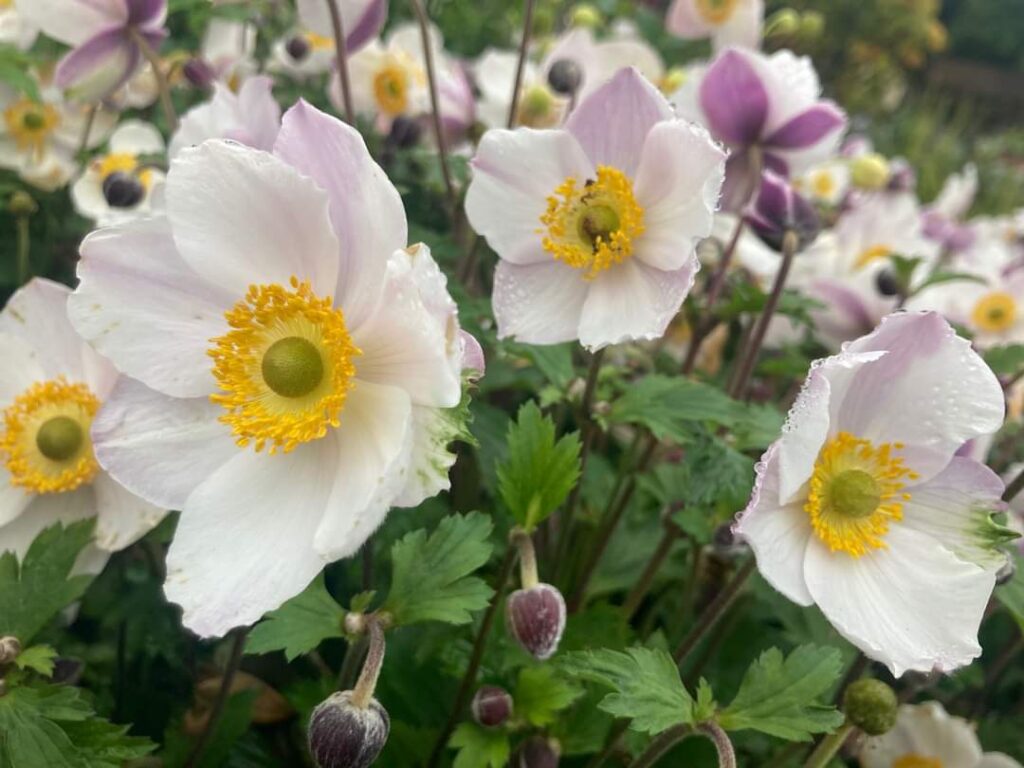
They bloom in summer when the temperature rises and sunlight last 6 hours.
The Anemone flowers bear beautiful blue, pink, or white shades and attain a height of 2o to 40 cm when mature.
10. Aconitum (Monkshood)
Monkshood, also known as wolf’s bane or leopard’s bane, is a flowering species in wild gardens.
It is known to be poisonous. In fact, the plant is mentioned in the fables for its toxic cardiotoxins and neurotoxins, which are used to make poison.
The toxic blossoms will deter deer and other pests from entering your garden.

When matured, it will attain a height of 2 to 4 feet with glossy palmate leaves and spikey flowers in shades of blue, purple, pink, and white.
It thrives in hardy zones 3 to 7 with cool temperatures and humus-rich soil with only a few hours of sunlight.
11. Milkweed (Asclepas)
Milkweed is a herbaceous perennial plant that excretes latex, a milky substance containing cardiac glycosides known to be toxic.
However, it is also known to display lush, nectar-rich showy flowers in shades of yellow, orange, and pink.

Milkweed will blossom every summer when provided with ample full sunlight and well-draining soil.
The mature Milkweed will grow to a height of 1 to 4 feet and thrive in Zones 3 to 9.
12. Coneflower (Echinacea)
Coneflower is a herbaceous flowering plant from the daisy family native to eastern and central North America.
Deers do not enjoy bright purple Coneflower due to their strong aroma.
The plant boasts ten different species grown throughout USDA zones 3 to 8 with the warm temperature and full sun.
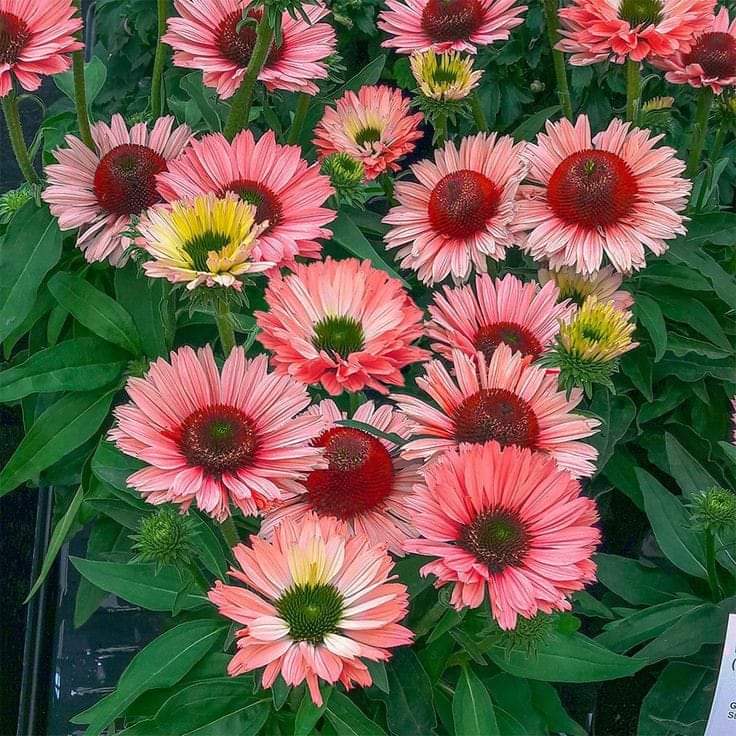
They are known to be drought-tolerant and are easy to grow. The purple/pink blossoms are cone-shaped with a daisy-like appearance.
They naturally thrive in moist to dry prairies but do well in well-drained soil in home gardens.
Some species can tolerate heavy clay and even shallow soil but ensure to provide full sun and partial shade.
13. Globe Thistle (Echinops)
Globe Thistle is a hardy perennial that blossoms every summer and displays spherical blue flowers.
It is a fast-growing perennial that will thrive in USDA zones with 3 to 9 and full sunlight.
The spikey foliage of Globe Thistle will deter deer and other predators from the garden, providing a haven for other plants.

When cared for, the Globe Thistle will reach 2 to 5 feet. Remember, it thrives in a warm, dry region with an ideal temperature between 65 to 75°F and loamy, rocky soil.
Also, Globe Thistle is known to be drought tolerant and may survive low watering.
14. Blanket Flower (Gaillardia)
Blanket Flowers (Gaillardia) are flowering plants that can be grown as annuals and perennials.
These ground-covering plants give out a cluster of richly colored, daisy-like flowers which may look like clusters of blossom.
Their blossoms serve as flower beds in the garden, giving them the name “blanket flowers.”
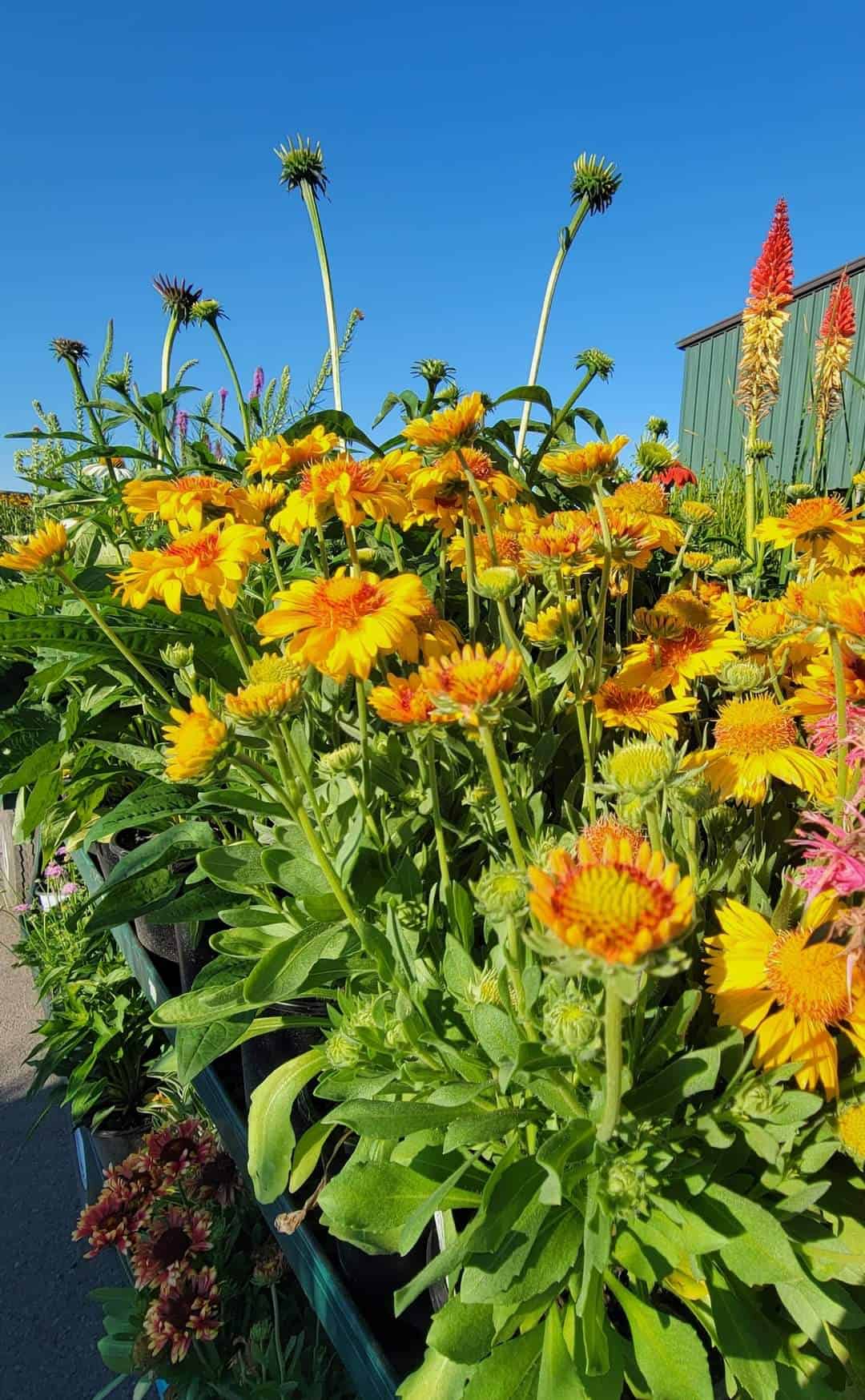
You can quickly grow them as the ground-covering plant to help keep the soil cool for other plants.
The Blanket Flowers attract many pollinators and help repels predators like deer and soil-borne pests.
A fully grown Blanket Flower will be 24 to 36 inches tall and 24 inches wide.
15. Daylily (Hemerocallis)
Daylily or Day Lily is a flowering perennial known to be easy-growing and pest-free.
Belonging to a family of Hemerocallidaceae, it consists of about 15 species that bloom every June or July.
Some species have two blooming seasons, one in spring and one in late fall.

Ensure to provide full sun for at least 6 hours on most well-drained soil to witness healthy blossoms.
They are perfect for adding a pop of color to your garden and helping ward off deer.
The plant will attain a height of 8 inches, while the flowers will reach 2 to 8 inches.
Other Popular Deer Resistant Flowering Perennials
Here are a few other popular flowering perennials you can grow in your garden to deter deer.
| Perennials | Specification | Image |
|---|---|---|
| Lupins (Lupinus) | 1. Lupins is a flowering perennial that includes over 199 species native to North Africa and Mediterranean region. 2. Provide full sun or partial shade in well-drained soil to witness a healthy plant with a height of 90 cm. | 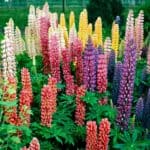 |
| Garden Phlox (Phlox paniculata) | 1. Garden Phlox is native to eastern and central US and grows best in open woods and thickets. 2. The ornamental plant displays colorful flowers when provided with full sun and well-drained soil. | 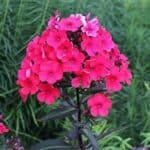 |
| Stonecrop (Sedum) | 1. The large genus of flowering plants in the family Crassulaceae displays stone like appearance. 2. The showy flowers attract many pollinators while deterring deer and pests. 3. Ensure to provide full sun and organic rich soil. | 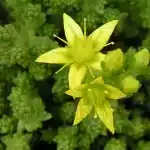 |
| Bleeding Hearts | 1. It is a flowering perennial known for dangling pink, white, or red flowers, giving an impression of hearts. 2. It will grow two feet tall when provided with full sun and well-draining soil. | 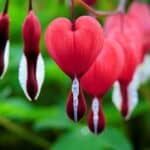 |
| Nepeta (Catmint) | 1. Nepeta is a flowering perennial that will grow up to 3 feet and deter deer. 2. Also known as catnip, it boosts pink and purple blossoms and thrives in full sun with well-drained soil. | 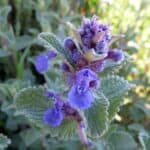 |
| Pinks (Dianthus) | 1. It is a genus of 340 flowering species native to Europe and Asia. 2. It displays showy flower in shade of pink, magenta, and salmon pink. 3. Ensure to provide full sun and well-drained soil. | 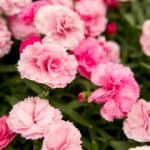 |
| Heartleaf Brunnera | 1. It is a perfect perennial that can be grown in USDA zones 3-8 which boast heart-shaped leaves and blue blossoms. 2. Deer hate the sandpaper texture of the foliage, staying away. | 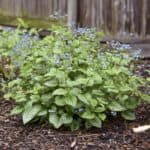 |
Tips to Protect Perennials from Deer
The naive animals will enter an unrestricted garden to mulch on juicy green foliage, and deer are not significantly different.
Although growing deer-resistant perennials may help deter the predators, they may not be enough to keep the animals out of the garden.
Here are a few proven tips to protect your perennials and other plants from deer.
1. Add a Garden Fence
Fencing your garden is one of the most reliable ways to prevent deer from destroying your plants.
The robust metal fence, usually with a height of 8 feet, will repel deer and other small animals.
Otherwise, you can use a cross-chained and electric fence to keep the predator away.
2. Use Invisible Nets
Install a mesh net around your garden to keep the deer away. Although not entirely invisible, these black mesh nets remain invisible from a distance.
Likewise, install metal or wood posts around the garden and attach a black mesh net using nails or clippers
Note: The mesh net must be at least 8 feet tall to deter the big predators.
3. Use a Motion-Activated Sprinkler
A modern solution to keeping deer away from your garden is to install motion-activate sensors.
The underground sensors will sprinkle water on the animal whenever it detects movement.
Keeping animals away from your garden may be effective, especially at night or when you are not home.
4. Use Deer Repelling Products
Use deer repellant spray found in the supermarket to ward off deer without damaging the plant.
Otherwise, you can prepare homemade deer repellants by tying clothes with fabric softener, fragrant soap, pepper spray, or a mixture of garlic and egg.
5. Keep Pets Off-leash in Garden
The pets like dogs will help keep big animals away from the garden by barking at them.
You can let them off-leash so they can chase the animals away whenever they notice one.
Conclusion
Your beautiful garden may become a prime attraction to large predators like deer, especially when you live close to the woods.
Fear not, as you can grow many deer-resistant perennials, so they are less interested in visiting your garden.
However, growing deer-resistant perennials may not be enough to ward off these animals.
Therefore, care to apply other protective measures to ward off these animals permanently.
